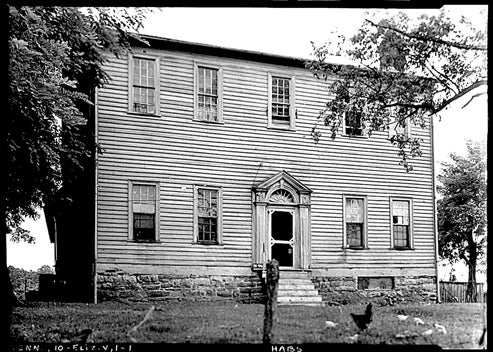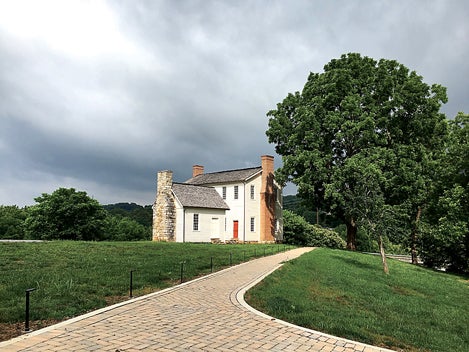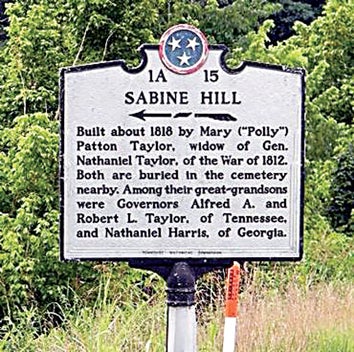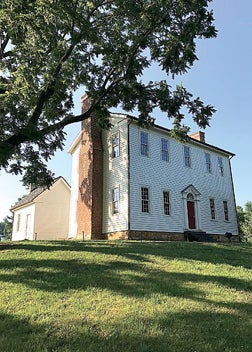Sabine Hill was the dream home of Brigadier Gen. Nathaniel Taylor
Published 1:07 pm Friday, July 30, 2021
|
Getting your Trinity Audio player ready...
|
BY ROZELLA HARDIN
Editorial Director
rozella.hardin@elizabethton.com
Among the events listed each and almost every month at Sycamore Shoals State Historic Area are guided tours at Sabine Hill, the home of Mary Patton Taylor, widow of Brigadier General Nathaniel Taylor. The house, located on a grassy knoll outside of town at 2328 West G St., is one of the finest examples of Federal architecture in the state of Tennessee.
Thousands pass by the stately mansion every day, but few have been inside one of the region’s oldest homes.
The staff of Sycamore Shoals Park wants to change that by offering tours of the home. This month tours are offered August 6, 8, 12, 14, 20, 22, 26 and 28 at 1:30 p.m. each listed date. The cost is $9 for adults; $5 for ages 7 to 17 years; and free for those six and under. Registration is required.
In 2008 Sycamore Shoals Park Manager Jennifer Bauer helped convince the State of Tennessee to buy the house from two local residents — Helen Wilson and Sam LaPorte — who hastily purchased the home when a developer announced plans to level the house and build new homes on the site. Public opposition stopped that from happening and gave the state time to acquire the house, which is listed on the National Register of Historic Places.
Brigadier General Nathaniel Taylor, a member of one of the region’s founding families, served in the War of 1812 under General Andrew Jackson. After the war, Taylor returned to Elizabethton (or Happy Valley at that time) with plans to build an impressive home with the best that money could buy. However, most historians agree that Taylor’s wife, Mary Patton Taylor, completed the home in 1818 after her husband’s death.
According to one account, Mary Patton Taylor rode to the Watauga on a pony bought and taken to Virginia by Nathaniel for her. The young couple married in 1791 and settled on a part of the Andrew Taylor estates.
Gen. Taylor served in the Carter County Military, and in 1796 was one of the commissioners named to lay off the county seat of Elizabethton. Taylor in 1893 succeeded Col. John Tipton as a member of the Tennessee Senate. He was also a trustee of Duffield Academy in Elizabethton.
Taylor’s descendants included military leaders, wealthy businessmen, and even two Tennessee governors — Alfred and Bob Taylor — along with Georgia Gov. Nathaniel Harris.
Gen. Taylor began building Sabine Hill between 1814 and 1816 after returning home from the war. The General had been one of the earliest settlers in Elizabethton, having arrived as a boy around 1780 when his family migrated from Rockbridge County, Va., to the settlement along the Watauga River.
The house is built on a two-story I-house plan with a five-bay front facade. It has a foundation of limestone quarried in the local area. The exterior walls are built from logs that are completely covered by clapboard siding. The floors are random-width pine laid over hand-hewn timber joists. There are brick chimneys on both ends of the structure.
Both Taylor and his wife are buried in the cemetery nearby. Gen. Taylor died in 1816 at the age of 45.
“Over all, the Taylors owned up to 7 million acres of land on this continent,” said Park Manager Bauer in a previous story. “It’s hard to over estimate just how influential this family was.”
According to one source, a part of his land holdings in Elizabethton came to him from his father. His land holdings covered the “major part of Happy Valley” about 3,000 acres. It is said that he could travel from his home in Elizabethton on horseback to Jonesborough and never get off his land.
Sabine Hill was on land formerly owned by Matthew Talbot. The land holdings of Gen. Taylor also included the land on which the North American and Bemberg Rayon plants were built.
Since purchasing the home in 2008, the Tennessee Historical Commission in partnership with Tennessee State Parks has restored the home and grounds. The restoration of the house was completed by some of the nation’s leading craftsmen and experts in 18th – and early 19th – century building methods.
The two-story house was listed on the National Register of Historic Places in 1973. The house, once restored, was opened to the public on Nov. 1, 2017, as a unit of Sycamore Shoals State Park. The property is operated by the park under a memorandum of understanding with the Tennessee Historical Commission.









